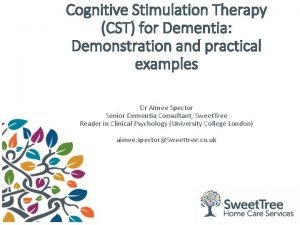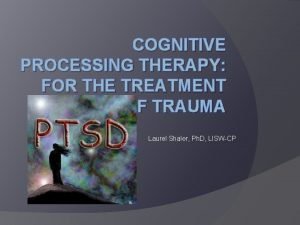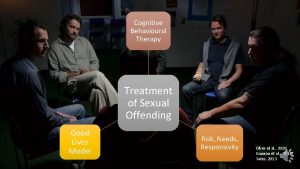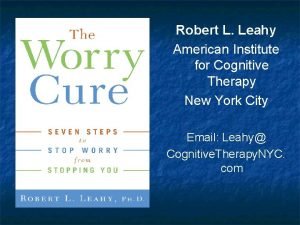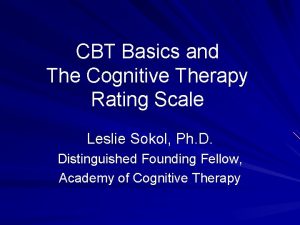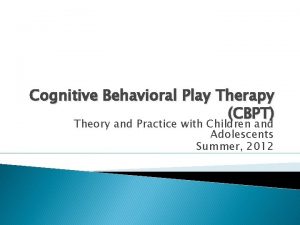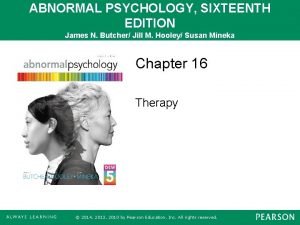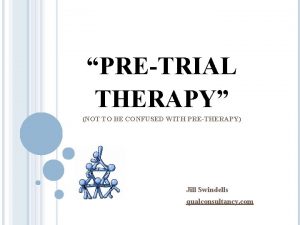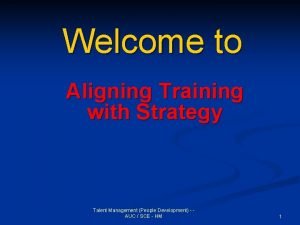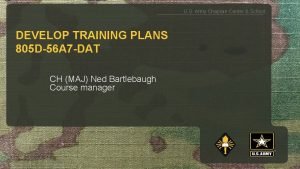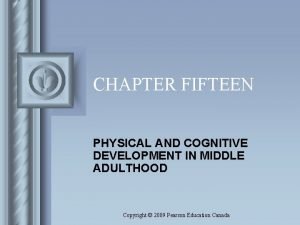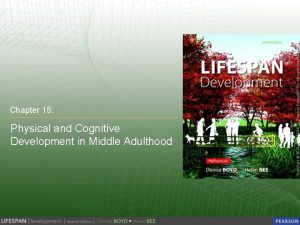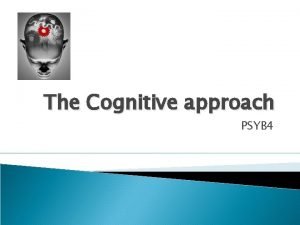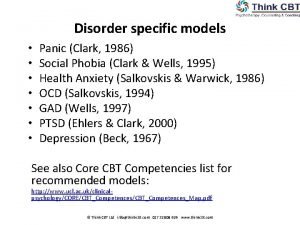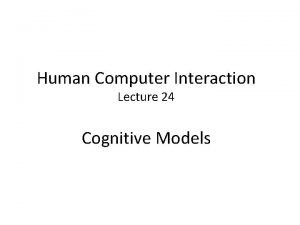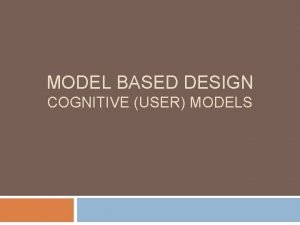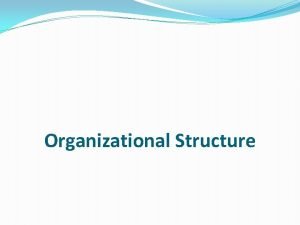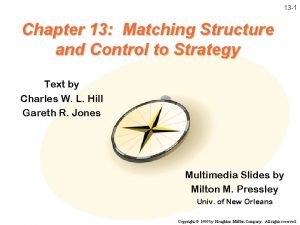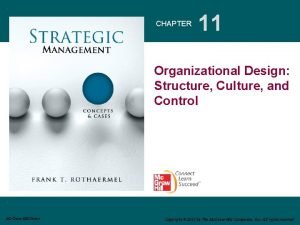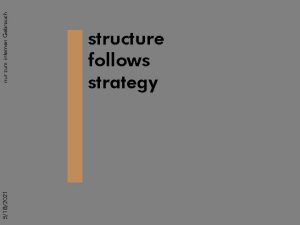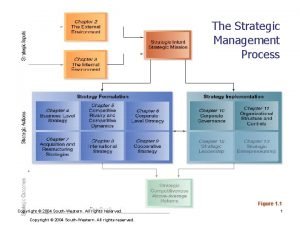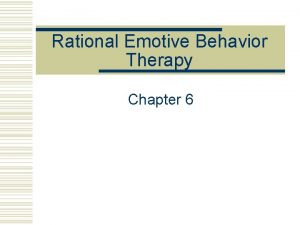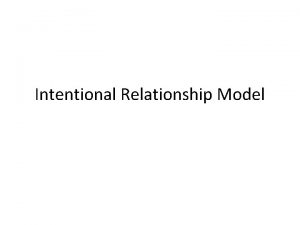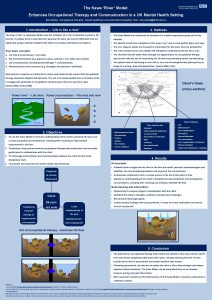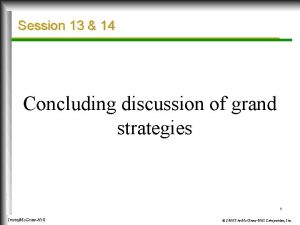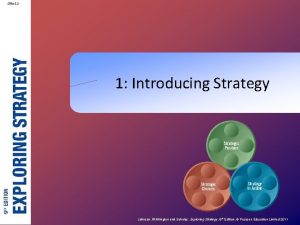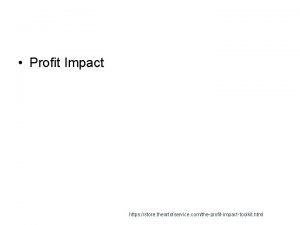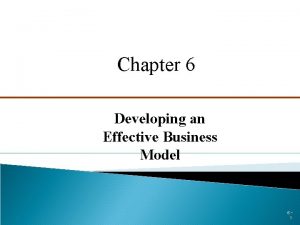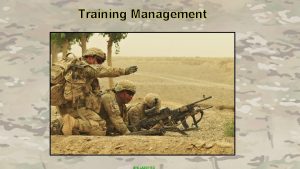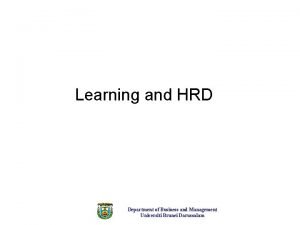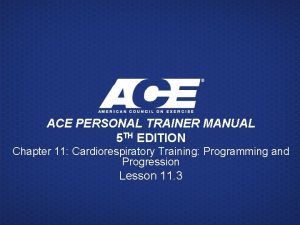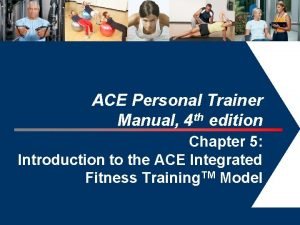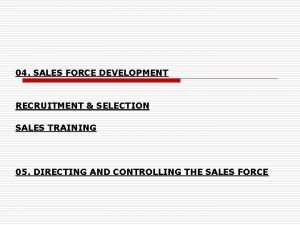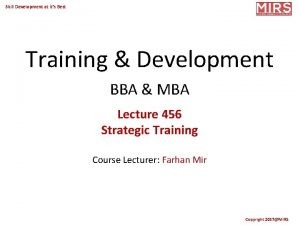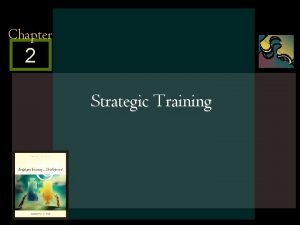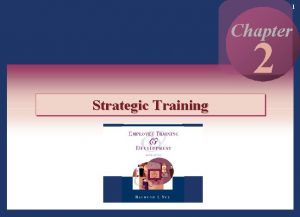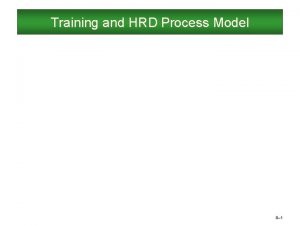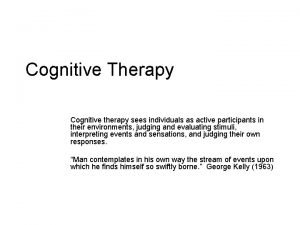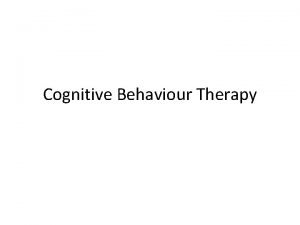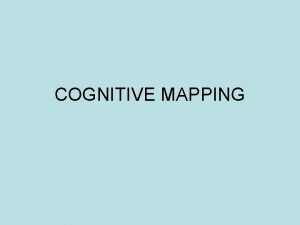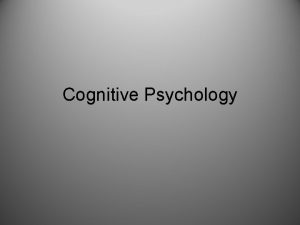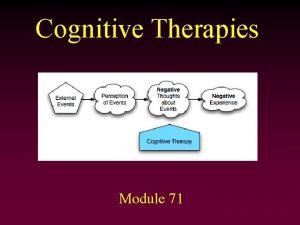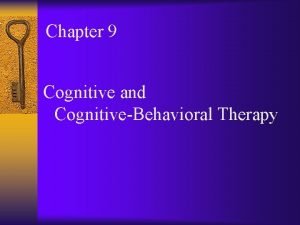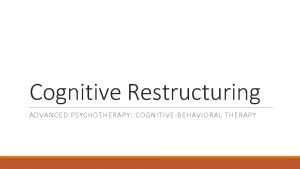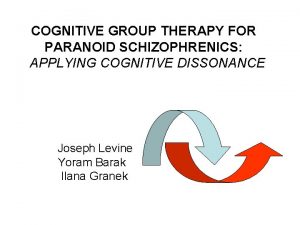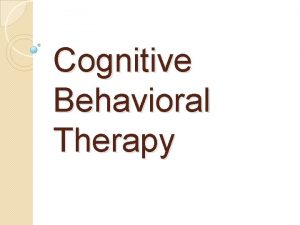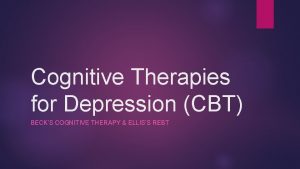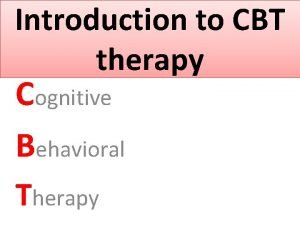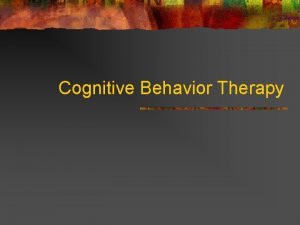Cognitive Therapy Model Structure Strategy Cognitive Therapy Training















































































- Slides: 79

Cognitive Therapy Model Structure Strategy

Cognitive Therapy Training Session 1: Introduction to the Cognitive Model

The Cognitive Model The cognitive model proposes that distorted or dysfunctional thinking [which influences the patient’s mood and behavior] is common to all psychological disturbances. [Beck, Cognitive Therapy: Basics and Beyond, p. 1]

Principles of Cognitive Therapy 1 � Cognitive Therapy is based on an ever-evolving formulation of the patient and his/her problems in cognitive terms. � Cognitive Therapy requires a sound therapeutic alliance. � Cognitive Therapy emphasizes collaboration and active participation. � Cognitive Therapy is goal oriented and problem focused � Cognitive Therapy initially emphasizes the present [Beck, J. (1993) Cognitive Therapy: Basics and Beyond, pp. 5 -9]

Principles of Cognitive Therapy 2 � Cognitive Therapy is educative, aims to teach the client to be his/her own therapist, and emphasizes relapse prevention. � Cognitive Therapy aims to be time limited. � Cognitive Therapy sessions are structured � Cognitive Therapy teaches clients to identify, evaluate, and respond to their dysfunctional thoughts and beliefs. � Cognitive Therapy uses a variety of techniques to change thinking, mood, and behavior. [Beck, J. (1993) Cognitive Therapy: Basics and Beyond, pp. 5 -9]

Automatic Thoughts Intermediate Beliefs Core Beliefs From fundamental to superficial thought responses

From Thought to Emotion Core Belief Emotion Intermediate Belief Situation Automatic Thought

Response Process Situation Automatic Thought Emotional Behavioral Physiological • Training for CT • “I don’t understand this. ” • Frustration • Anxiety • Bite nails • Doodle—quit listening • Sweaty palms • Tight muscles

Core Beliefs …the most fundamental level of belief.

Core Belief Operations 1 � It is an idea, not necessarily a truth � You can believe it quite strongly, even “feel” it to be true, and yet have it be mostly or entirely untrue. � As an idea, it can be tested. � It is rooted in childhood events; it may or may not have been true at the time you first came to believe it.

Core Belief Operations 2 � It continues to be maintained through the operation of your schemas, in which you readily recognize data that support the core belief while ignoring or discounting data to the contrary. � You and your therapist can use a variety of strategies over time to change this idea so that you can view yourself in a more realistic way.

Categorizing Core Beliefs Helpless Unlovable Worthless “I can’t cope. ” “I am unwanted. ” “I am bad. ” “I’m a failure. ” “I will always be alone. ” “I am dangerous. ”

Intermediate Beliefs …Rules, Attitudes, and Assumptions

Intermediate thoughts operate between automatic thoughts and core beliefs Intermediate thoughts enable a person to piece information together and create a way to adapt to negative core beliefs. Intermediate thoughts act as a screen through which a person filters options available to them in a problem solving process.

Automatic Thought Intermediate Belief Core Belief I’m incompetent If I don’t understand this, then I’m dumb. I don’t understand this. Identify the Core Beliefs, Automatic thoughts, and Intermediate Beliefs…

Automatic Thoughts …the most superficial level of cognition

Automatic Thought Clues… Begin to look for automatic thoughts when the client’s emotional response could be rated at a 7< on a scale from 1 -10 if 10 is the greatest emotional response.

Identifying Automatic Thoughts What’s going through my mind, right now? If I had to, what would I guess I was thinking about? Could I have been thinking about…_____ or _____? Was I imagining something or remembering something? What does this situation mean to me?

Case Study-Group Exercise Presenting Problem: Tosha needs to go to the grocery store, but this activity creates panic symptoms for the client. Tosha explained to her therapist, “If something bad is going to happen, it will happen to me. ” Tosha gave this explanation to justify avoiding a trip to the grocery store. She went on to explain that she believes she might “pass out” or have a “heart attack” while she is in the store. “My husband does not usually mind doing our grocery shopping, but he is very sick this week and he needs chicken soup…I don’t know what to do. . . I can’t do this. ” The therapist asks, “How have you managed this situation in the past? ” The client explained that sometimes her adult children have been able to help her, and other times she has chanted small prayers to herself until she made it through the event.

Group Exercise, part 1 �Make a list of possible automatic thoughts �What might be the client’s intermediate beliefs �What might the client’s activated core belief[s] be?

Case Study-Team Review 1 Presenting Problem: Tosha needs to go to the grocery store, but this activity creates panic symptoms for the client. Tosha explained to her therapist, “If something bad is going to happen, it will happen to me. ” me. Tosha gave this explanation to justify avoiding a trip to the grocery store. She went on to explain that she believes she might “[I will]pass out” out or have a “ [I will have a] heart attack” attack while she is in the store. “My husband does not usually mind doing our grocery shopping, but he is very sick this week and he needs chicken soup… I don’t know what to do. . . do I can’t do this. ” this The therapist asks, “How have you managed this situation in the past? ” The client explained that sometimes her adult children have been able to help her, and other times she has chanted small prayers to herself until she made it through the event.

Case Study-Team Review 2 Presenting Problem: Tosha needs to go to the grocery store, but this activity creates panic symptoms for the client. Tosha scary. [Attitude] explained 1. to Life her is therapist, “If something bad is going to happen, it 2. to I must others function in will happen me. ” have Tosha gaveto this explanation to justify avoiding daily life. [Rule] She went on to explain that she a trip to the grocery store. 3. If I avoid, then badout” things will not believes she might “[I will]pass or have a “ [I will have a] heart me. [Assumption] attack” whilehappen she is intothe store. “My husband does not usually 4. our If I am weakshopping, enough, then others mind doing grocery but he is very sick this week and shopping [evensoup… God] will take know care of me. to do. . . I can’t do this. ” he needs chicken I don’t what The therapist[Assumption] asks, “How have you managed this situation in the past? ” The client explained that sometimes her adult children have been able to help her, her and other times she has chanted small prayers to herself until she made it through the event.

Case Study-Team Review 3 Presenting Problem: Tosha needs to go to the grocery store, but this activity creates panic symptoms for the client. Tosha explained to her therapist, “If something bad is going to happen, it will happen to me. ” [I am fragile or I am weak] weak Tosha gave this explanation to justify avoiding a trip to the grocery store. She went on to explain that she believes she might “[I will]pass out” or have a “ [I will have a] heart attack” while she is in the store. “My husband does not usually mind doing our grocery shopping, but he is very sick this week and he needs chicken soup… I don’t know what to do. . . I can’t do this. ” [I am not capable or I am helpless] helpless The therapist asks, “How have you managed this situation in the past? ” The client explained that sometimes her adult children have been able to help her, and other times she has chanted small prayers to herself until she made it through the event.

Group Exercise, part 2 Create a diagram using the case study example. Core Belief Emotion Intermediate Belief Situation Automatic Thought

What did you cover today that’s important for you to remember?

Cognitive Therapy Training Session 2: Structuring Treatment

Overall Treatment Structure � About 16 to 20 sessions � Value of creating a strong therapeutic alliance in a timely manner � Introduce structure in first session to set the pace for therapy � Structure is based on the Cognitive Model’s principle of being goal-oriented and problem focused and operates in the context of the well-formed alliance.

Session 1 A guide for structuring your first session…

First Session Goals

Therapeutic Alliance Introduce Cognitive Model • Expectations for therapy and past experiences • Share reasons to be hopeful in this therapeutic approach by citing research -based information about the Cognitive Therapy Model • Use illustrations to give the client a simple overview of the CT model • Avoid educative details—the client can lose hope quickly if complicated explanations evoke any negative ideas about his or her ability to learn. Session 1 Goals of the First Session-1

Educate the Client about his or her Diagnosis • Use handouts while discussing common symptoms of the diagnosis. • Use this opportunity to normalize the client’s experience, boost hope and strengthen the client’s joining with you and the model. Gather Information • Elicit the client's presenting problem. In the first session, the client may want to give more information about their background. This is a good opportunity to collect data for the case conceptualization. • Elicit information about the client’s current problems. Create a Goal List • Help the client to create short term goals that are realistic and manageable • Use a format for documenting that will aid in follow up on goals throughout treatment. Session 1 Goals of the First Session-2

Creating a Therapeutic Alliance Joining with therapist Warmth and genuiness Competence Joining with the Cognitive Model Research-based efficacy Simplicity of the model Commitment to the Process Limited time Personal investment--homework

First Session Outline

Mood Check Set the Agenda • This is the first opportunity to educate the client about measuring the intensity of symptoms. • Measurements give therapeutic team important information that becomes part of increasing insight, empowerment and hope. • The first agenda will be somewhat different from the rest of the sessions. It will be important for you to include educating the client to the model, education about the diagnosis, and a goal-setting exercise. Session 1 Structuring the First Session-1

Expectations for Therapy Symptom Checklist Set Goals • Elicit information about the client’s previous experiences • Ask the client about his/her expectations for this therapeutic process • This is another tool that aids in measuring improvements and setbacks. It also can reveal incongruent information when compared with mood check and agenda. • In the first session, this can be part of the diagnosis education. • Help the client consider doable short term goals and ambitious, but realistic longterm goals. Session 1 Structuring the First Session-2

Case Conceptualization In-session activity • Even in the first session, you will have many opportunities to see the client in the context of the Cognitive Model—Situation, AT, Behavioral and Emotional responses. This will come in handy later when you are conceptualizing the case. • In-session activities are opportunities for joining • Choose an activity that will offer the client some initial insight into their diagnosis or thought patterns. This will offer the client hope that things can change. Session 1 Structuring the First Session-3

Assign Homework • Look at assignments that have relevance to the session and that give the client an opportunity to be successful with their first assignment. • Educative material about the Cognitive Model or the client’s diagnosis is a good idea. Recap the Session • The therapist can start by verbalizing a “lookback” at the session and then asking the client what they remember about the process Feedback • Therapy Report Session 1 Structuring the First Session-4

Working Sessions

Mood Check • Use this as a tool to help the client create the agenda. Set the Agenda • Setting the agenda after the mood check is a strategic difference from other session layouts that you may have seen. • Data dump—how to organize and structure the information given. Review Homework and Bridge Sessions • Noncompliance with homework is an opportunity • Give the client an opportunity to share about the assignment or the previous session Working Sessions Structuring the Working Sessions-1

Symptom Checklist • This is another tool that aids in measuring improvements and setbacks. It also can reveal incongruent information when compared with mood check and agenda. Follow up on Goals • Give the client an opportunity to acknowledge accomplished goals • Give the client and opportunity to brainstorm/problem-solve solutions for goals that have been difficult to accomplish. Working Sessions Structuring the Working Sessions-2

Identify Thought Responses • As you are addressing agenda items, you are listening within the framework of “Situation, A. T. , Feelings, and Behaviors. ” • Provide opportunity for the client to identify the thought responses, feelings and behaviors In-Session Activity • Choose an activity to do in session based on the presenting problem. Doing the exercise with you will build the client’s confidence concerning home assignments. Working Sessions Structuring the Working Sessions-3

Homework Assignment • This component is often placed on the agenda. Many people have negative ideas about “homework. ” This is a great opportunity to use a relatively harmless subject to illustrate the Cognitive Model. Recap the Session • Pull it all together and give the client and yourself a opportunity to let it all “set up. ” Feedback • This is an important component of building therapeutic alliance. • Therapy Report tool Working Sessions Structuring the Working Sessions-4

Termination/Relapse Prevention Sessions

Recap Treatment • As a team, look back through mood checks, work books or just remember together times of growth, new insight and developed skills. Relapse Prevention • Consider what events or thoughts will be most likely to create susceptibility for a relapse. • Create a plan to address those possibilities. Termination/Relapse Prevention Sessions Goals of the Termination Process Sessions-1

Self-Help Goals Final Assignment • Self-help has been emphasized throughout treatment. Follow through on this collective theme of treatment. • Encourage the client to see himself as his own therapist. • Review goals that have been followed through treatment and create a new goal list for the client’s future. • Self-guided therapy sessions Termination/Relapse Prevention Sessions Goals of the Termination Process Sessions-2

Tying it all together… CT Notes

Progress Note Components Fidelity Friendly-1 • Mood Check • Agenda • Treatment Plan Goal Addressed • Symptoms

Progress Note Components Fidelity Friendly-2 • Identifying Automatic Thoughts • Guided Discovery • Interventions to Challenge Automatic Thoughts • Behavioral Interventions

Progress Note Components Fidelity Friendly-3 • Problem Solving Skills • Identifying and Modifying Schemas • Preparation for Termination and Relapse Prevention • Home Exercises • Therapist Seeks Feedback

Cognitive Therapy Training Session 3: Strategy and Fidelity

Cognitive Therapy Tools

Conceptualizing Tools �Case Conceptualization Diagram

Cognitive Model Education Tools �Diagrams of the Cognitive Model �Recommended Reading ◦ Handouts: What Should I Know About Cognitive Therapy ◦ Recommended Reading List

Diagnosis Education Tools �Common Symptoms of Depression Monica Ramirez Basco, Ph. D.

Thought Response Tools-1 �Identifying Automatic Thoughts �Automatic Thought Questionnaire �Dysfunctional Thought Record �Evaluating Automatic Thoughts �Coping Card Activity

Thought Response Tools-2 �Thinking Error Identification �Core Belief Operations �Categorizing Core Beliefs �Core Belief Worksheet �Identifying and Assessing Schemas

Emotional Response Tools �Identifying Emotions �Rating Emotions �Pairing Emotional Responses with Specific Events/Situations

Behavioral Intervention Tools �Activity Monitoring �Pleasure and Accomplishment Ratings �Coping Errors Worksheet �Relaxation Strategies

Problem Solving Tools �Problem Solving Worksheet �Problems List �Assessing Your Solutions �Advantages and Disadvantages Analysis

Preparation for Termination Tools �Self-Guided Sessions �Recommended Reading List

Supervision Tools �Cognitive-Behavior Therapy Supervision Checklist Developed by Donna Sudak, M. D. , Jesse H. Wright, M>D. , Ph. D. , David Bienenfeld, M>D. , and Judith Beck, Ph. D. , 2001

Fidelity Components to be included in treatment and documentation

CBT Therapeutic Process-1 In addition to the vital interpersonal skills required for any effective therapeutic relationship… Warmth Empathy Unconditional Positive Regard

CBT Therapeutic Process-2 …provision of CBT involves specific therapeutic behaviors effectively using time in a brief therapy approach creating an active collaborative therapy process increasing generalization of the use of skills outside of therapy

Structured and Agenda Directed Sessions The CBT therapist: �Collaborates with the consumer to develop an agenda for each session �Effectively manages time within sessions.

Guided Discovery-1 The CBT therapist uses exploration, information seeking, and questions to assist the consumer in… Exploring the validity of automatic thoughts Exploring alternative perspectives Recognizing faulty logic Reaching balanced, reality-based conclusions following this exploration.

Guided Discovery-2 The therapist avoids … Lecturing Attempting to argue the consumer out of a position. Debating

Therapist Seeks Feedback The CBT therapist seeks explicit statements from the client about his or her understanding and perception of therapy process itself, and to gauge whethere is reciprocal understanding or clarity between therapist and client.

Therapy Report Exercise Therapy Report: Was there anything What did What do that How likely you want to you cover bothered are you to today that’s make sure you about do the important to cover at therapy homework? for you to today? [ Y or [0 -100%] the next remember? session? N ] If so, what was it?

Home Exercises • suggests activities or exercises for the client to do between sessions which build on the work being done in therapy, and which Therapist consistently furthers the client’s skills or self-understanding, and • reviews previous home assignments to ensure success and learning.

Use of Cognitive Behavioral Therapeutic Techniques The aim of CBT is to reduce the symptoms of depression and improve functioning. This is done by changing thoughts and schemas, mood, and behavior. A variety of strategies may be used to achieve therapy goals…

Identifying Automatic Thoughts The CBT therapist explains automatic thoughts to clients and teaches them how to recognize and "catch" negative automatic thoughts. Automatic thoughts are defined as cognitions or images that arise for an individual without deliberate focus.

Identifying Automatic Thoughts What’s going through my mind, right now? If I had to, what would I guess I was thinking about? Could I have been thinking about… ______or ______? Was I imagining something or remembering something? What does this situation mean to me?

Interventions to Challenge Automatic Thoughts � The CBT therapist works with consumers to evaluate automatic thoughts. � The therapist works to make incremental changes in the consumer's belief in key cognitions and strives to teach the consumer skills to self-examine their thoughts.

Behavioral Interventions The CBT therapist uses behavioral interventions to address thoughts or behaviors that are distressing or contributing to symptoms of depression. Behavioral interventions utilize strategies to change behavior.

Problem-Solving Skills The CBT therapist teaches the consumer problem -solving strategies to address issues important to the consumer.

Identifying and Modifying Schemas The CBT therapist introduces the concept of schemas to the consumer and engages in one or more interventions aimed at modifying a primary schema.

Preparation for Termination and Relapse Prevention The CBT therapist discusses termination and prepares the client to use the skills taught within therapy after termination.

What was the most important part of the training for you?
 Cognitive stimulation therapy training course
Cognitive stimulation therapy training course Cognitive stimulation therapy training course
Cognitive stimulation therapy training course Cognitive and non cognitive religious language
Cognitive and non cognitive religious language For adult sex
For adult sex Cpt abc worksheet example
Cpt abc worksheet example Cognitive behavioral therapy for sex offenders
Cognitive behavioral therapy for sex offenders The american institute for cognitive therapy
The american institute for cognitive therapy Cognitive behavioral therapy birmingham
Cognitive behavioral therapy birmingham Cognitive conceptualization diagram
Cognitive conceptualization diagram Cbpt training
Cbpt training Cognitive therapy borrows many techniques from
Cognitive therapy borrows many techniques from Commune psychology
Commune psychology Executional framework in advertising
Executional framework in advertising Psychodynamic and humanistic therapies have in common
Psychodynamic and humanistic therapies have in common Bioness integrated therapy system occupational therapy
Bioness integrated therapy system occupational therapy What are the major humanistic therapies
What are the major humanistic therapies Pre trial therapy training
Pre trial therapy training Corporate strategy vs business strategy
Corporate strategy vs business strategy Home replication strategy example
Home replication strategy example The chase strategy
The chase strategy Multidomestic strategy vs transnational strategy
Multidomestic strategy vs transnational strategy Aligning hr strategy with business strategy
Aligning hr strategy with business strategy Porter's diamond model international business
Porter's diamond model international business Masterful strategies come from
Masterful strategies come from Strategy formulation vs strategy implementation
Strategy formulation vs strategy implementation Drawing inferences listening strategy
Drawing inferences listening strategy Directional strategies in strategic management
Directional strategies in strategic management International or multinational
International or multinational Aligning training with strategy
Aligning training with strategy Describe kat's tribute costume.
Describe kat's tribute costume. Learning strategy training
Learning strategy training Learning strategy training
Learning strategy training Usachcs
Usachcs Denny's model of physical and cognitive ageing
Denny's model of physical and cognitive ageing Denny's model of physical and cognitive ageing
Denny's model of physical and cognitive ageing Game teck
Game teck Cognitive approach definition
Cognitive approach definition Cognitive model psychology
Cognitive model psychology Moorey vicious flower
Moorey vicious flower Cognitive model of abnormality
Cognitive model of abnormality Linguistic model in hci
Linguistic model in hci Cognitive modelling
Cognitive modelling Training is expensive without training it is more expensive
Training is expensive without training it is more expensive Metode of the job training
Metode of the job training Aggression replacement training facilitator training
Aggression replacement training facilitator training Cbd models
Cbd models Strategy structure people
Strategy structure people Marketing strategy structure
Marketing strategy structure Matching structure with strategy
Matching structure with strategy Implementing strategies management and operations issues
Implementing strategies management and operations issues Comprehensive strategic management model
Comprehensive strategic management model Is l gore a mechanistic or an organic organization
Is l gore a mechanistic or an organic organization Structure follows strategy
Structure follows strategy Structure follows strategy definition
Structure follows strategy definition Strategy and structure have a reciprocal relationship
Strategy and structure have a reciprocal relationship Abcde model
Abcde model Therapeutic relationship model
Therapeutic relationship model Kawa river model
Kawa river model Training structure template
Training structure template 15 grand strategies with examples
15 grand strategies with examples The exploring strategy model
The exploring strategy model Pims profit impact of market strategy
Pims profit impact of market strategy A generic strategy process model
A generic strategy process model Developing an effective business model
Developing an effective business model Heuristic test strategy model
Heuristic test strategy model 8 step training model
8 step training model People capability maturity model training
People capability maturity model training Michalak and yager model
Michalak and yager model Baldwin and ford transfer of training model
Baldwin and ford transfer of training model 8 step training model
8 step training model Edip army
Edip army Ace ift model cardiorespiratory training
Ace ift model cardiorespiratory training Function health fitness performance continuum
Function health fitness performance continuum Army eight step training model
Army eight step training model Recruitment and selection of sales force ppt
Recruitment and selection of sales force ppt Faculty model of training
Faculty model of training Faculty model of training
Faculty model of training Faculty model of training
Faculty model of training Faculty model of training
Faculty model of training Hrd process model
Hrd process model

